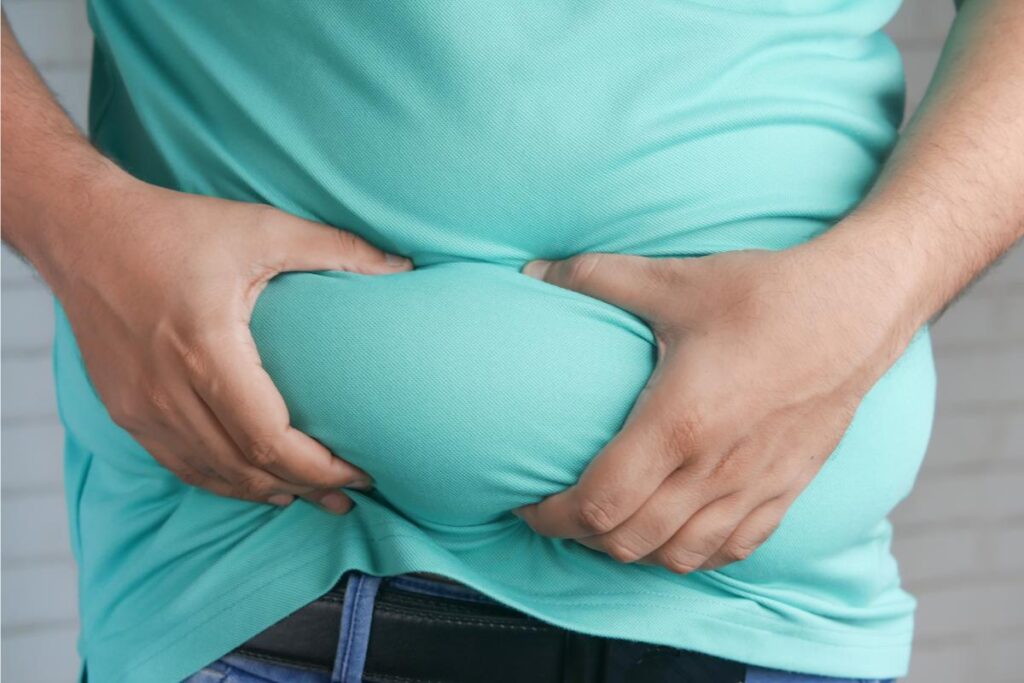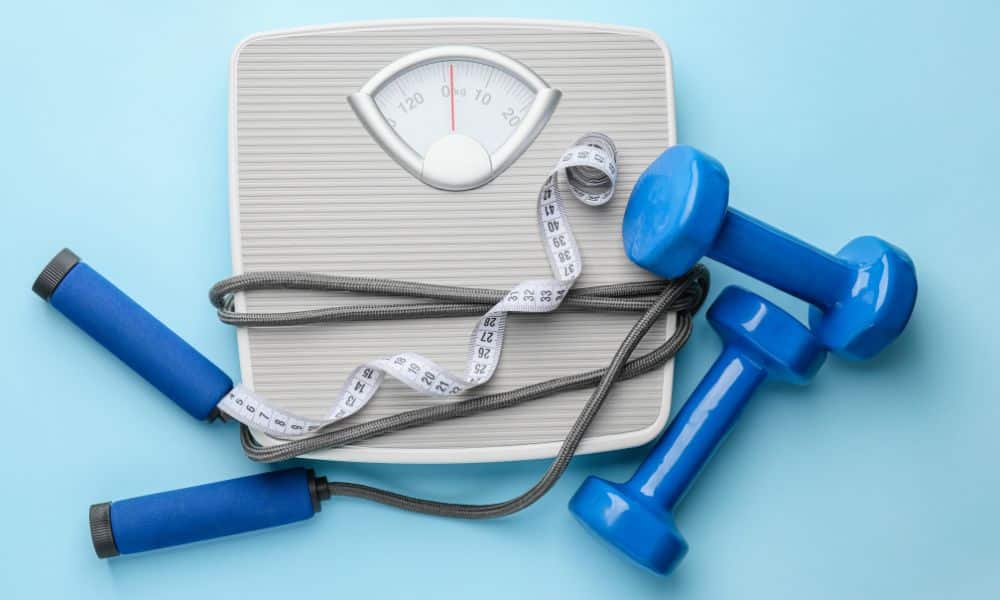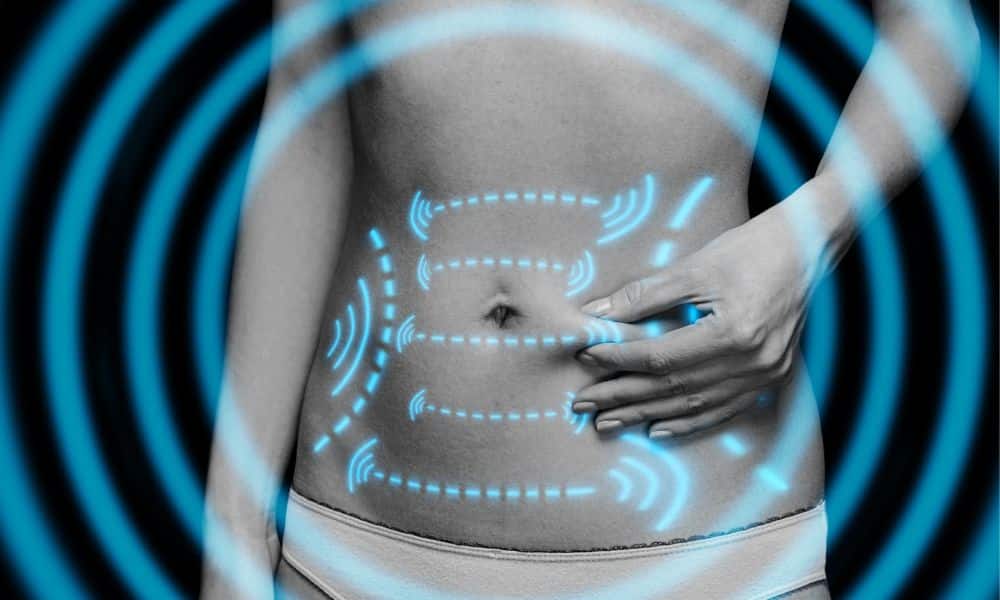Are you seeking the best way to track your fitness goal during a weight loss journey? Stomach protrusion is a qualitative measurement that will align closer with your goals than many quantitative measurements.
Understanding your body composition is crucial in pursuing a healthy and fit physique. While caliper measurements and bioelectrical impedance scales provide accurate insights into body fat percentage, visual cues can offer valuable hints about your body fat levels. One such technique involves observing stomach protrusion or extension to estimate body fat percentage. This practice has gained attention for its simplicity and accessibility, allowing individuals to gauge their progress without complex tools.
In this article, we explore using stomach protrusion as an indicator of body fat percentage. We also delve into the visual cues that can provide insights into your fitness journey. Also, we will discuss how using stomach protrusion to measure fitness goals may closely align with your fitness journey rather than the number on a scale or measuring tape.
Understanding the Stomach Protrusion Technique
The stomach protrusion technique involves observing your stomach’s appearance and how it changes as you adjust your body composition. It’s important to note that while this method offers general insights, it may not provide precise body fat percentage measurements like more scientific methods. However, it can serve as a helpful visual guide for gauging progress.
You can determine stomach protrusion by using your hand or clothes. The path your stomach takes to travel down your belly is a good indicator of stomach fat. In addition, you can take your hand to pinch or see how much fat you can grab. Also, you can use clothes to determine if you are reaching your weight loss goals. How comfortably you fit into your clothes can help determine if you look more fit.
In addition, stomach protrusion techniques offer a more qualitative method of determining health and fitness, whereas scales, tapes, and calipers offer quantitative methods for assessing health and wellness. More specifically, stomach protrusion techniques may align more with your fitness journey by helping you achieve one of the desired weight loss outcomes: to fit comfortably in your clothes and look great.
Stomach Appearance and Body Fat Percentage: A Visual Guide
- Flat Stomach with Visible Abs (Less than 10% Body Fat): When body fat is at or below 10%, the abdominal muscles become visible, resembling a six- or eight-pack, depending on genetic predisposition. To assess this level, you can use your hand to slide down your stomach, feeling for the presence of defined muscle contours. A flat appearance with visible muscle definition indicates a relatively low body fat percentage.
- Stomach Slope and Oblique Definition: As body fat decreases, the path your hand travels down your stomach will be more vertical and less horizontal. Slide your hand down your stomach to feel how it slopes as it travels downward. This gradual change in slope as it travels down a vertical path suggests a decrease in body fat percentage.
- Love Handles and Muffin Tops (Higher Body Fat Percentage): Love handles and muffin tops, which are pockets of fat around the sides and waist, often indicate higher body fat percentages. Excess fat in these areas can create a protruding appearance. If your stomach extends beyond or over your pants, your body fat percentage is likely higher.
Weight Loss and Muscle Health
Weight loss goals often revolve around reducing stomach fat and improving overall appearance. Stomach fat tends to take up more space than muscle, extending outward. Muscle, on the other hand, contracts inward, making you appear more compact. While you can’t spot-reduce body fat, you can target muscle development, contributing to a more toned and fit appearance.
Therefore, setting goals around stomach protrusion is a great way to look and get fit. Muscle weighs more than fat, so if you build muscle and lose fat, you will decrease your body fat percentage while increasing your body weight. Thus, the scale may not be the best measure to determine if you are reaching your fitness goal to get and look fit.
Instead, aim to see your feet, knees, or sexual organs without bending over. Another goal you can use is for your hand to travel a more vertical path as you move it down your stomach. The steeper, the closer you are to a six-pack. A more significant amount of body fat will prevent your hand from traveling a verticle path as you move it down your stomach. The more horizontal the direction of your hand, the more stomach fat you have.
You can also use clothes and how comfortable you can fit in them as a goal. Therefore, a goal of being able to work back into your favorite shirt or pants is a better goal than reaching a certain number on the scale. Thus, if your pants size changes over time and your clothes become more comfortable or loose, you are on the right path. Your clothes will also indicate how well you develop the muscles in your stomach, obliques, legs, and butt.
Balancing Body Fat and Muscle Mass
Reducing body fat percentage involves either decreasing body fat, increasing muscle mass, or both. As you engage in resistance training and cardiovascular exercises, your body fat levels may naturally decline as you build muscle. Increasing muscle mass contributes to a leaner appearance and boosts metabolism, aiding overall fat loss.
Also, muscle mass helps you control how your body moves and looks when you contract it. Exercises such as situps or leg raises may not target stomach fat, but they will help prevent your stomach from protruding as you stand, sit, or move during the day.
Therefore, a weight loss goal should include decreasing fat and increasing muscle to prevent becoming fat and skinny. Reaching a weight loss goal and still looking like a smaller fat version of yourself can be frustrating.
The goal of weight loss is to look, feel, and perform better. But greater emphasis will always be placed on how a person looks. It is human nature. While losing fat will improve your appearance. Losing fat and gaining muscle will make you look even better. Thus, it is more attractive to look lean and muscular than fat and skinny.
Final Thoughts
Using stomach protrusion or extension to gauge body fat percentage is a simple yet informative technique that can provide insights into your fitness progress. While it’s not a substitute for precise measurement methods, it offers a tangible way to assess changes in body composition visually. Individual variations exist; genetics, hydration, and other physiological aspects can influence the results.
A balanced diet, regular exercise, and consistent fitness routines will contribute to achieving your desired body composition goals. As with any fitness approach, focusing on overall health and well-being is essential while using visual cues as one of many tools to guide your fitness journey.
If you or someone you know is looking to improve your health, share this article on Facebook or Twitter so that others can learn more about self-care.




